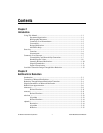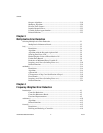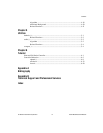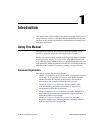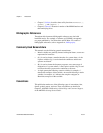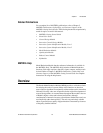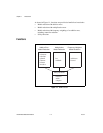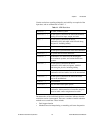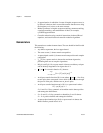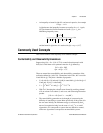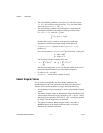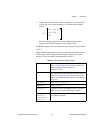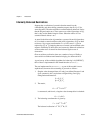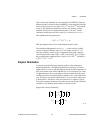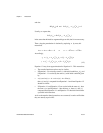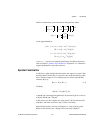
Chapter 1 Introduction
Xmath Model Reduction Module 1-6 ni.com
• L
2
approximation, in which the L
2
norm of impulse response error (or,
by Parseval’s theorem, the L
2
norm of the transfer-function error along
the imaginary axis) serves as the error measure
• Markov parameter or impulse response matching, moment matching,
covariance matching, and combinations of these, for example,
q-COVER approximation
• Controller reduction using canonical interactions, balanced Riccati
equations, and certain balanced controller reduction algorithms
Nomenclature
This manual uses standard nomenclature. The user should be familiar with
the following:
• sup denotes supremum, the least upper bound.
• The acute accent (´) denotes matrix transposition.
• A superscripted asterisk (*) denotes matrix transposition and complex
conjugation.
• λ
max
(A) for a square matrix A denotes the maximum eigenvalue,
presuming there are no complex eigenvalues.
•Reλ
i
(A) and |λ
i
(A)| for a square matrix A denote an arbitrary real part
and an arbitrary magnitude of an eigenvalue of A.
• for a transfer function X(·) denotes:
• An all-pass transfer-function W(s) is one where for all ω;
to each pole, there corresponds a zero which is the reflection through
the jω-axis of the pole, and there are no jω-axis poles.
• An all-pass transfer-function matrix W(s) is a square matrix where
P >0 and P ≥ 0 for a symmetric or hermitian matrix denote positive
and nonnegative definiteness.
• P
1
> P
2
and P
1
≥ P
2
for symmetric or hermitian P
1
and P
2
denote
P
1
– P
2
is positive definite and nonnegative definite.
•A superscripted number sign (#) for a square matrix A denotes the
Moore-Penrose pseudo-inverse of A.
Xjω()
∞
sup
∞– ω∞<<
λ
max
X
*
jω()Xjω()[][]
12/
Xjω() 1=
W′ jω–()Wjω() I=



